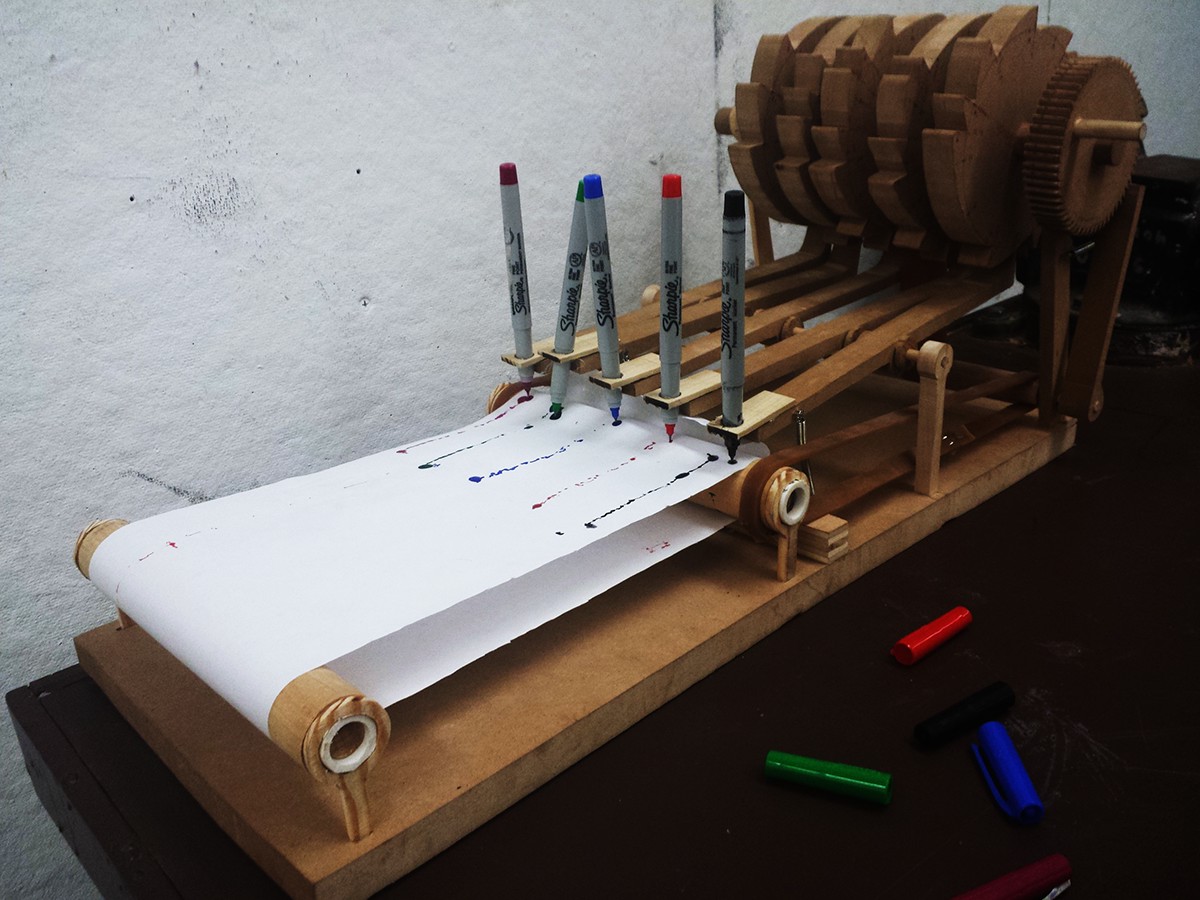
Sensory Input Depiction Device
Created by Dennis Krawec
20" x 8" x 10"
Materials: medium-density fiberboard (MDF), wooden dowels (1/4", 5/8", 1") plywoood, PVC pipe (5/8"), industrial rubberbands, extenstion springs, Sharpie markers, woodglue
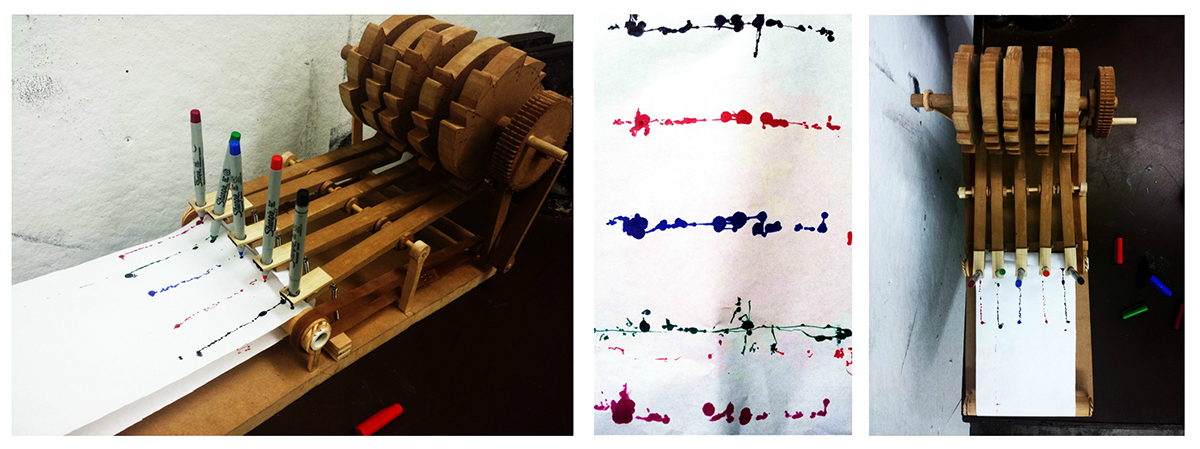
Spatial Dynamics Final, Professor: Deborah Coolidge
Prompt: Create an artwork that expresses the passage of time.
Final Project Description: When operated, the machine moves five gears that all have specific notches cut out corresponding to a series of exact times in a twelve-hour period. Five spring-loaded levers press against the gears to read the notches as the gears rotate. The levers then translate the data on the gears into dots on paper created from the sharpies attached on the ends of the levers.
To represent the passage of time, I recorded my five senses on Thanksgiving Day, 2014, from 12:00PM to 12:00 AM. The notebook page from with the recorded times is shown below. The original data is translated from a kinetic sculpture to a visual resprentation and ultimately an auditory rendering.

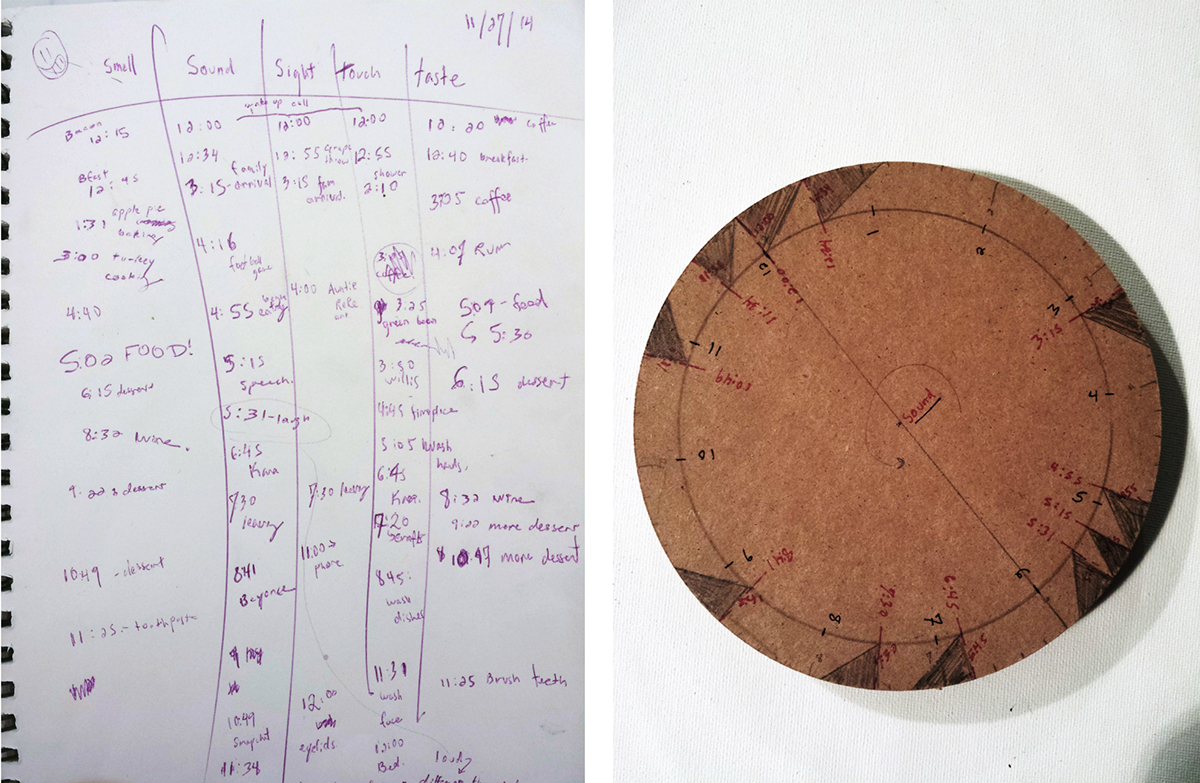
On Thanksgiving Day (11/27/14), I carried with me a notebook and recorded the exact times of significant incoming stimuli from my five senses. Some of the stimuli include: the bitterness of morning coffee (12:00PM), the smell of a cooking turkey (3:00 PM), hearing the relatives arrive (3:15 PM), beginning the feast (5:09 PM) eating dessert (6:15 PM), eating more dessert (9:22 PM), and a plethora of other stimulants on the busy day. The time frame for recording was performed from 12:00PM to 12:00AM sharp (see above, left). After all of the sensory information had been recorded, I cut five 6-inch wooden circles and superimposed them with analog clock faces. Each wooden circle represents of one of the human senses and the times of the stimuli were charted on the clock faces (see above, right). The circles of wood were then cut so the stimulant times were expressed as notches in a gear (see below, left).
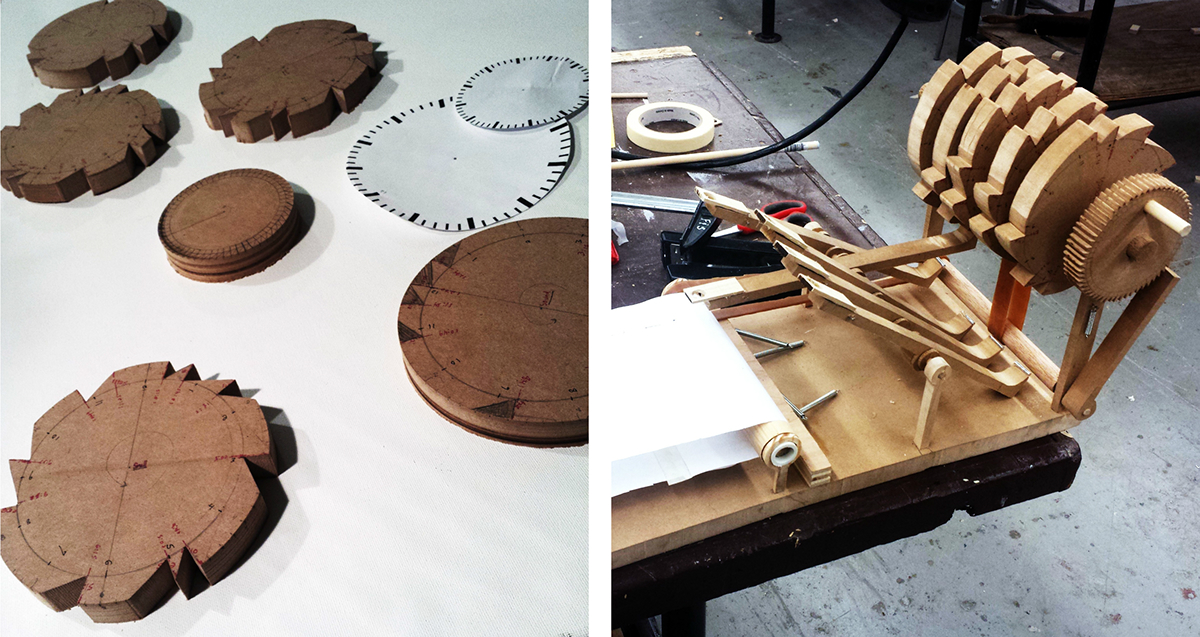
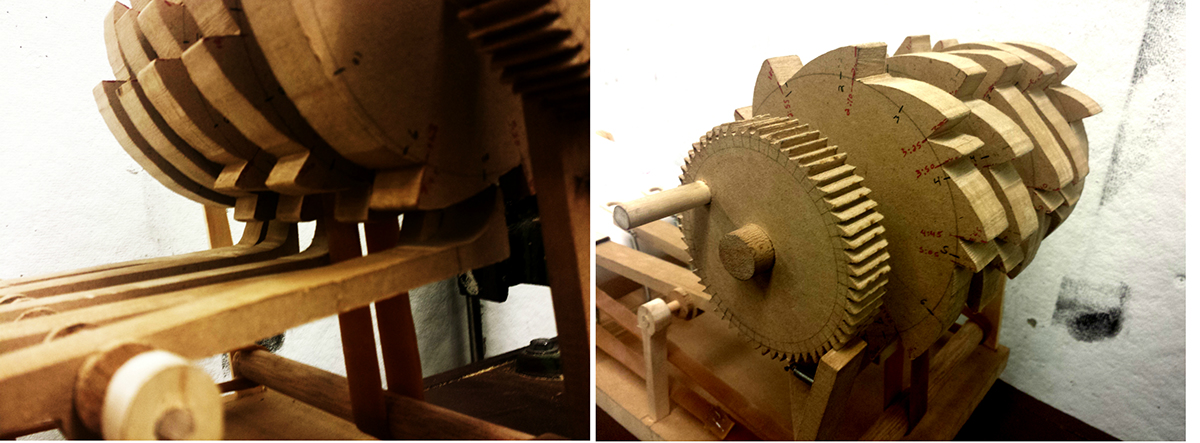
All five gears were aligned to start at 12:00 PM and glued onto a single dowel so when turned, they all rotated in unison. On one end of the dowel is a sixth wheel, with sixty notches, also glued to the dowel (see above, right). Now, the twelve hour period plus all of its senses can be expressed in sixty seconds, if rotated at one notch per second.

To finish the project, five spring-loaded levers were installed. One end of each lever reads the notches by moving along the gear's base as it turns. The virtical motion is repeated on the opposite end of the levers where Sharpie markers have been attached. Two industrial rubber bands were also attached to rotate the plane that the Shapies draw on. As the levers move up and down from the gears, the markers create dots on a moving platform. The original Thanksgiving sensory stimuli have now been translated into a series of dots.

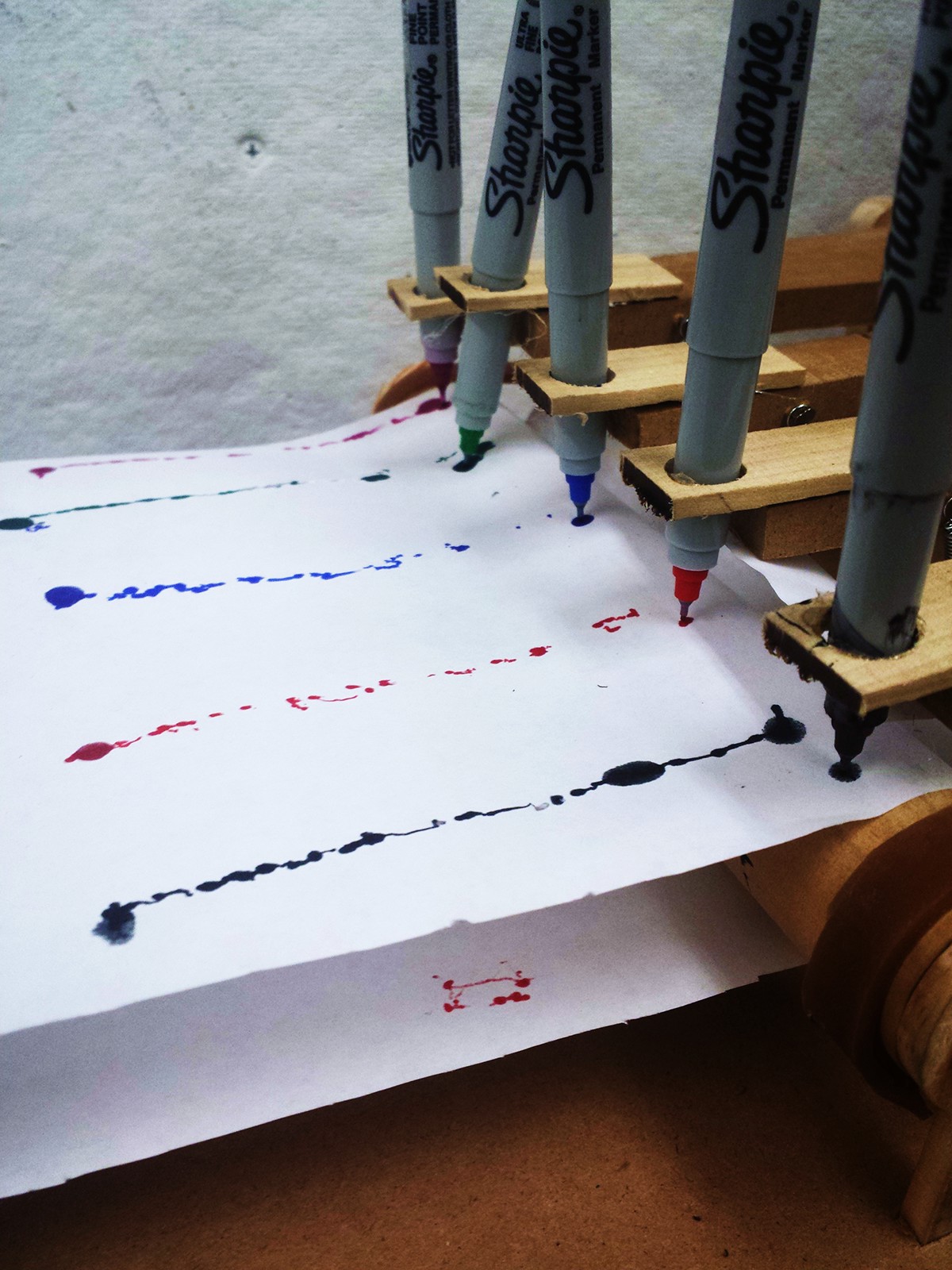
But of course, it couldn't stop there. After the data had been turned into a series of dots on paper, I scanned the sheet and transformed it into a musical composition. To do this, I took the scanned image of dots, isolated the exact point of the dot, stretched the image while keeping the distance between points proportional, and superimposed the five lines of dots over a bar of sheet music. The points, aliged with the lines (E, G, B, D, F) can now be played as music notes in any octave at any tempo. See below for the process of creating the music spread and a video with the audio. Be warned, it will not sound good.
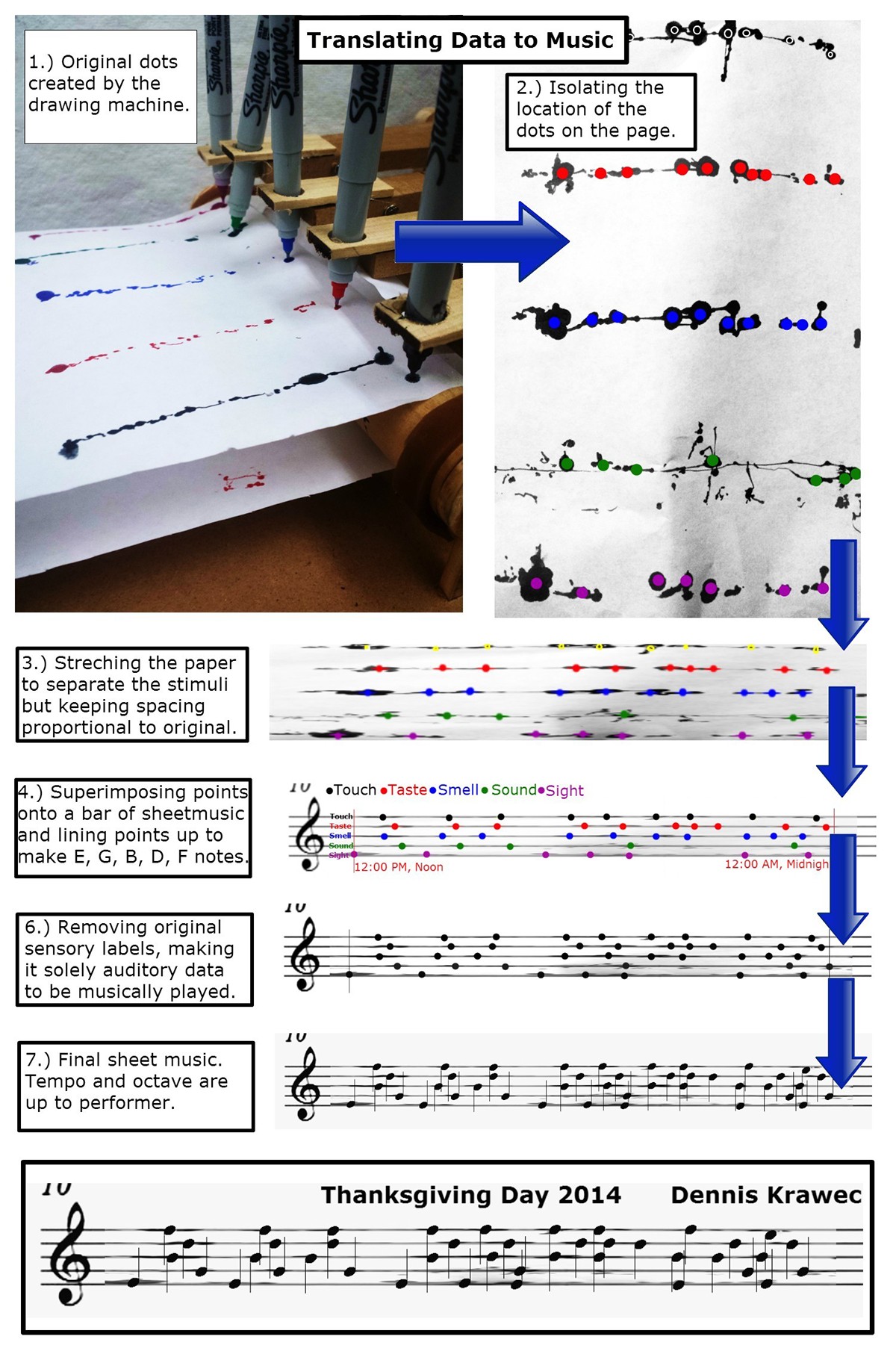
Sounded pretty horrible right? It's okay, it's not supposed to sound good. However, what it does is represent the original times of the recorded stimuli from my Thanksgiving Day and portray them in an auditory sample.

